2024年11月9日-10日,2024南京符号学大会暨南京大学首届研究生大师论坛于江苏省南京市隆重举行。本次大会暨论坛由中国新闻史学会符号传播学专业委员会、中国中外文艺理论学会文化与传播符号学分会、南京大学新闻传播学院、bwin必赢唯一官方网站(新闻学院,出版学院)、南京大学研究生院主办,江苏紫金传媒智库、bwin必赢唯一官方网站符号学-传媒学研究所协办,活动得到了多个学术期刊的学术支持。
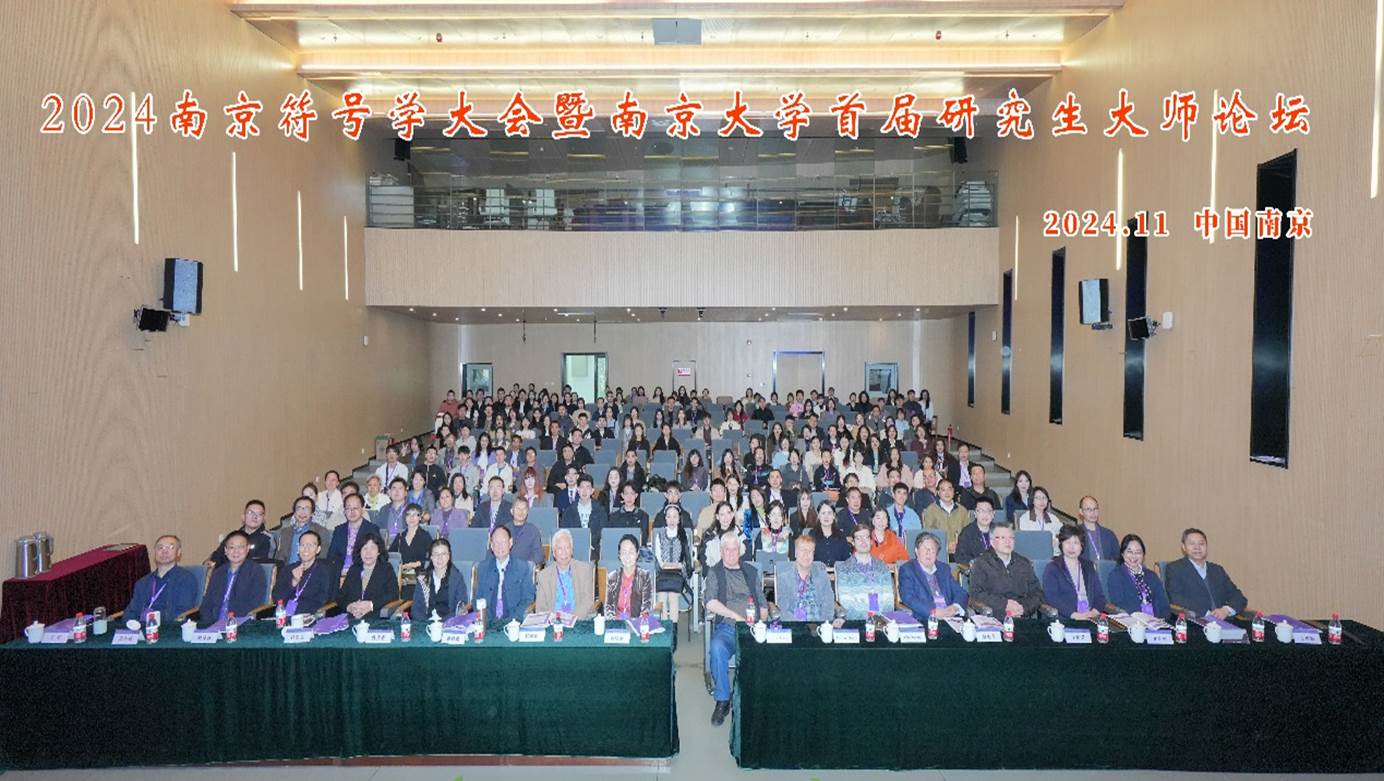
全体参会人员合影
本次会议主题为“人文与科技的交响:符号学演进发展新向度”,旨在探索符号学在新科技背景下的理论创新与实践应用。
此次会议参会人员167名,涉及6个国家和地区的89个科研院所单位,吸引来自国内外符号学、叙事学、艺术学、比较文学等领域的优秀学者,共同推进人工智能时代的符号学学术研究。
开幕式由南京大学新闻传播学院丁和根教授主持。南京大学副校长索文斌,中国新闻史学会符号传播学专业委员会理事长、中国中外文艺理论学会文化与传播符号学分会会长蒋晓丽教授,中国逻辑学会符号学专业委员会秘书长王军教授先后在开幕式上致辞。
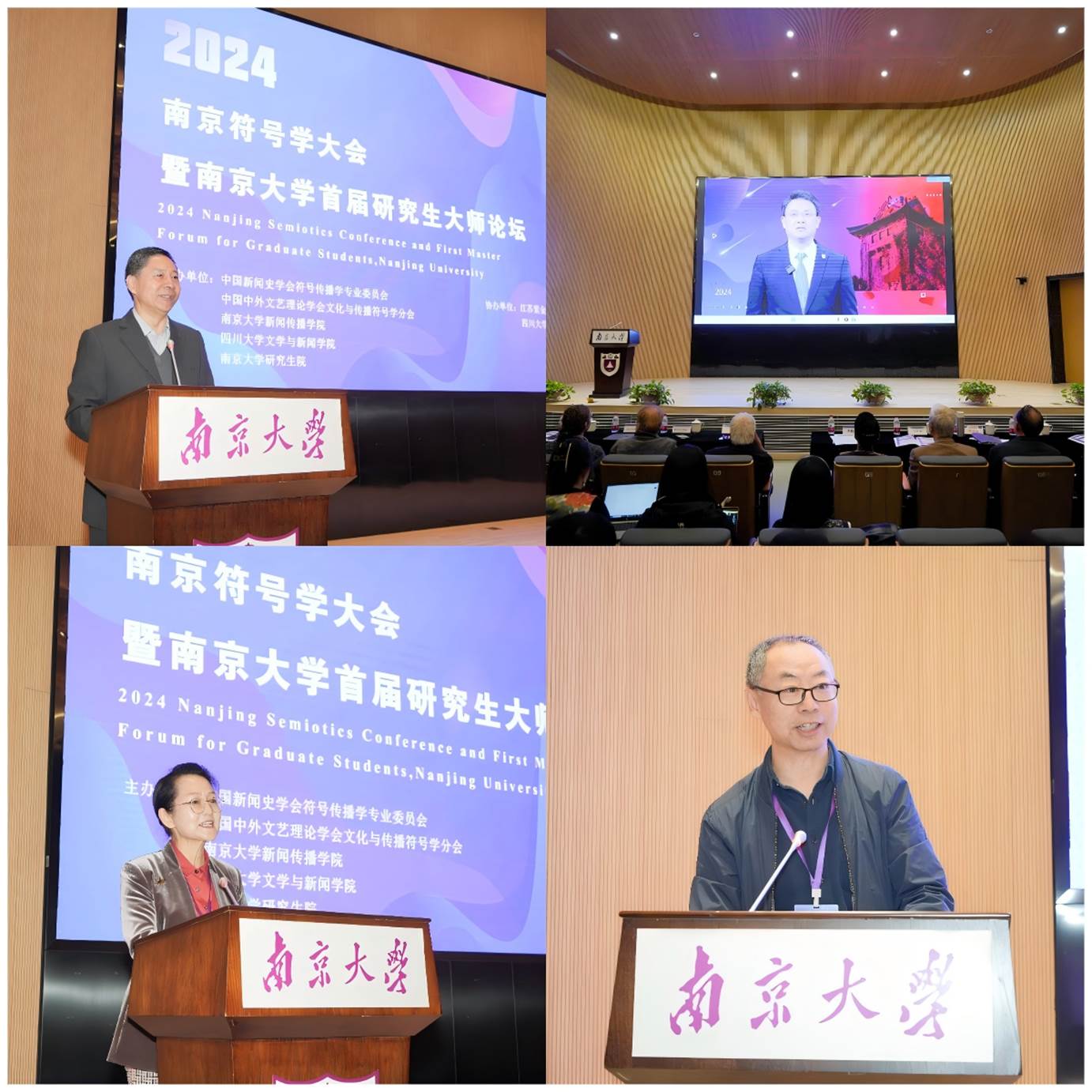
开幕式嘉宾致辞
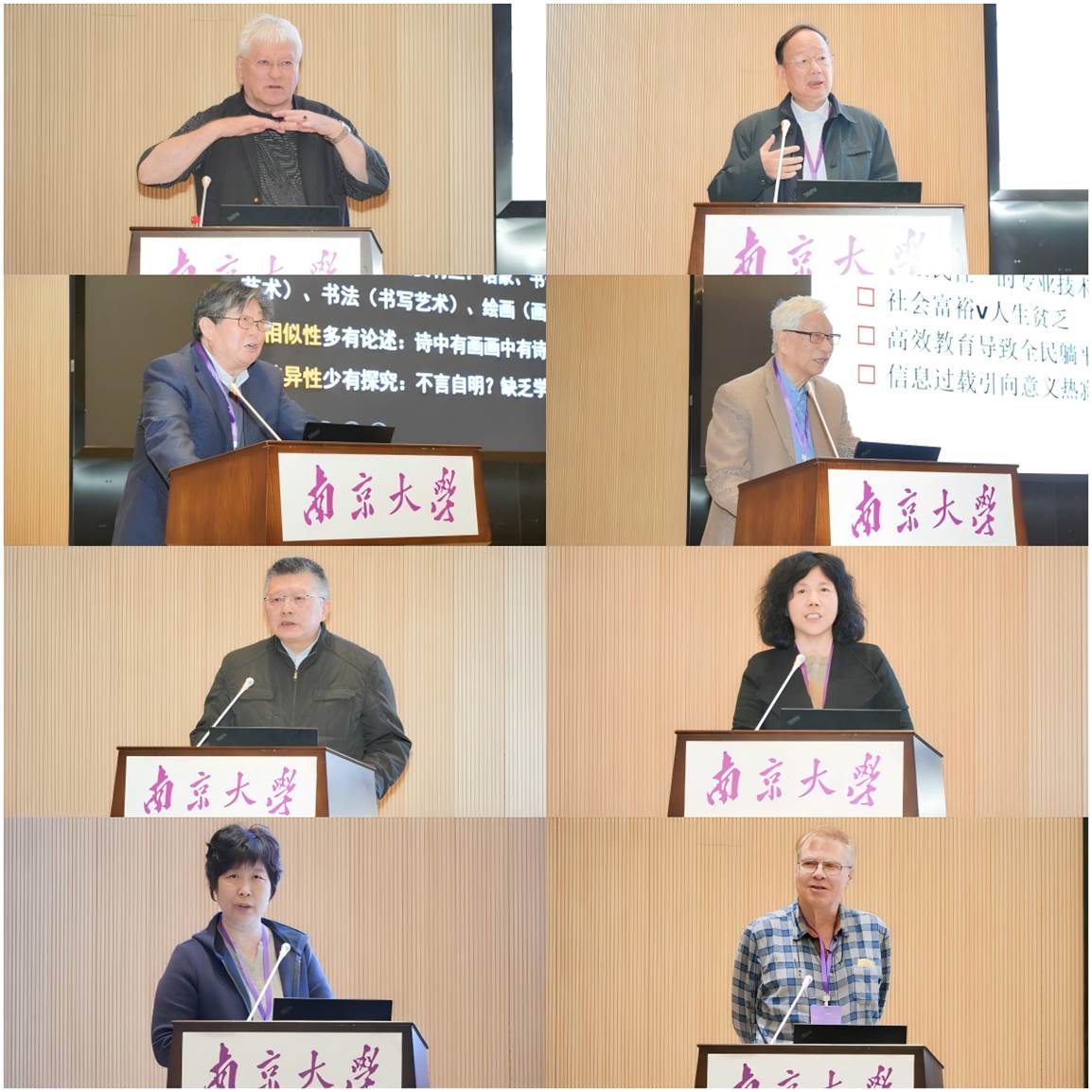
大会学术报告上半场
紧随开幕式进行的便是大会学术报告的上半场,由8位国际符号学、传播学名家做大会学术报告,其中包括2位外国学者。学术报告(上半场)由蒋晓丽教授主持,丁和根教授进行学术评议;并邀请到普渡大学比较文学系、根特大学文化研究与教育学Steven Totosy教授、江西师范大学傅修延教授、南京大学文学院赵宪章教授、bwin必赢唯一官方网站赵毅衡教授、南京大学外国语学院王加兴教授、南京大学艺术学院赵奎英教授、上海大学新闻传播学院齐爱军教授、瑞典林奈大学文化科学系Michael Ranta教授 8位学者带来精彩的学术分享。
10日上午举办了大会学术报告的下半场,由bwin必赢唯一官方网站胡易容教授主持,四川师范大学谭光辉教授担任评议人。来自中国社会科学院新闻与传播研究所的曾庆香教授、苏州大学外国语学院的王军教授、bwin必赢唯一官方网站的陆正兰教授、上海外国语大学语料库研究院的Alin Olteanu副教授、bwin必赢唯一官方网站的唐小林教授、bwin必赢唯一官方网站的李兴、bwin必赢唯一官方网站的胡易容教授、意大利都灵大学哲学与教育学系的Massimo Leone教授、保加利亚新保加利亚大学东南欧符号学研究中心的Kristian Bankov教授采用“线上+线下”的方式分别分享了他们的学术报告。
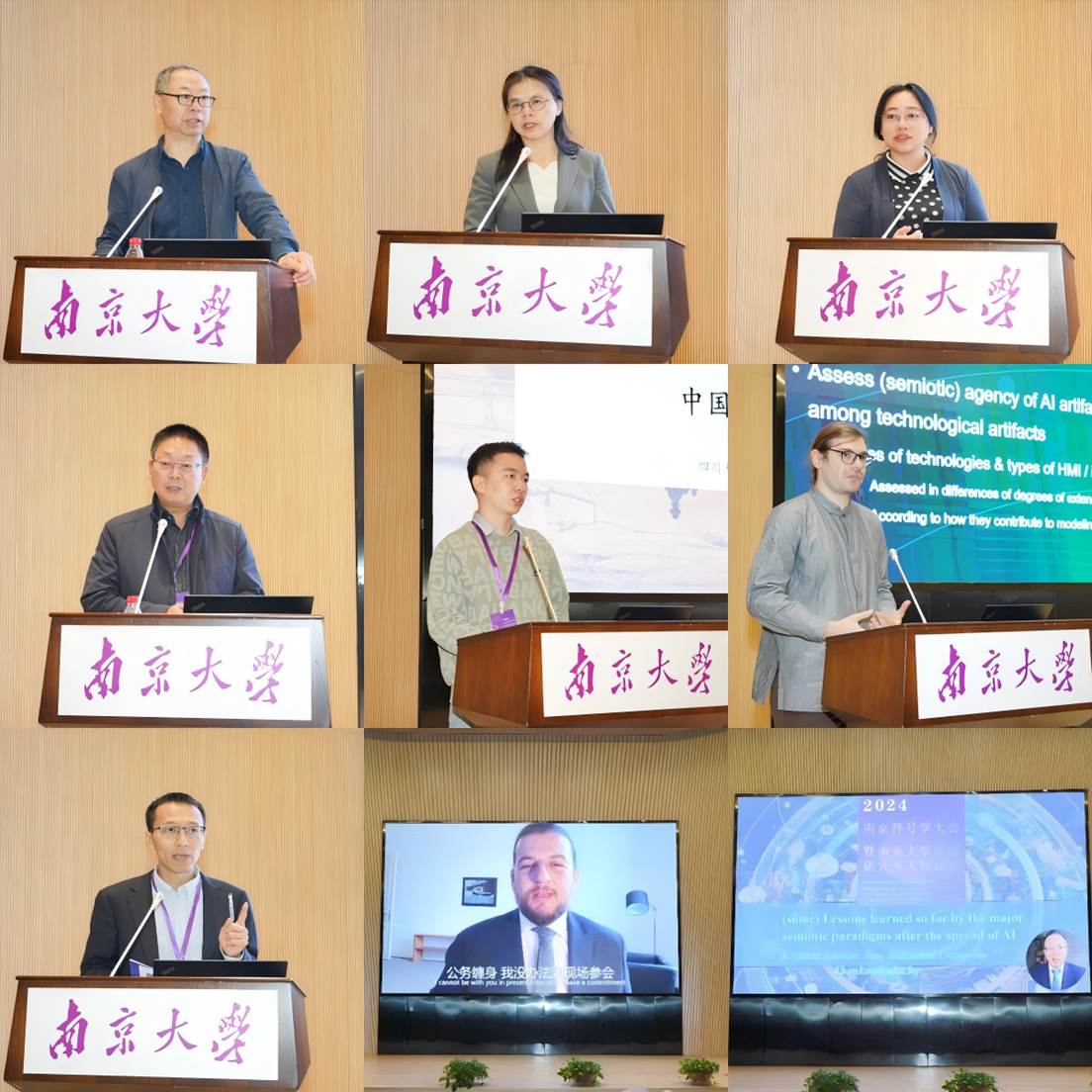
大会学术报告下半场
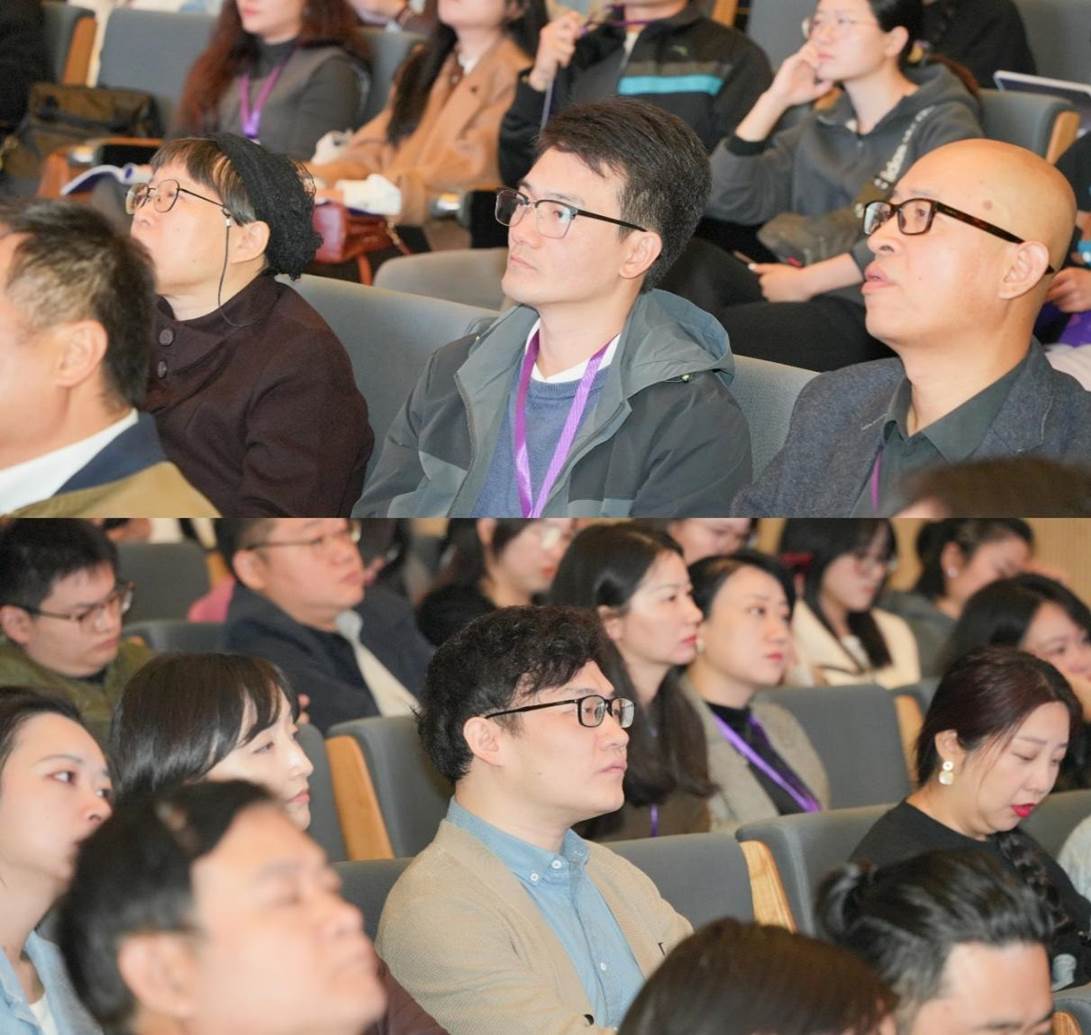
聆听大会学术报告的现场观众
此次大会共收到学术论文135篇。除了聆听专家们分享洞见,本次会议还设置了若干丰富的圆桌分会场,由来自国内外高校的144位资深学者与青年才俊领衔分论坛,围绕人工智能与数字时代的符号学、艺术与文学符号学、中华传统文化符号思想与遗产研究、国际传播与跨文化传播符号学、信息与传播符号学、符号叙述学与符号学理论新进展、媒介形象与商品符号学、符号学与叙述学理论、艺术与文学符号学、新闻史与传播学、电子媒介与赛博符号学11个论域进行了专题研讨。他们在6场学术圆桌分会场与5场新锐圆桌分会场上分享最近的学术成果,碰撞出最激烈的思想火花。
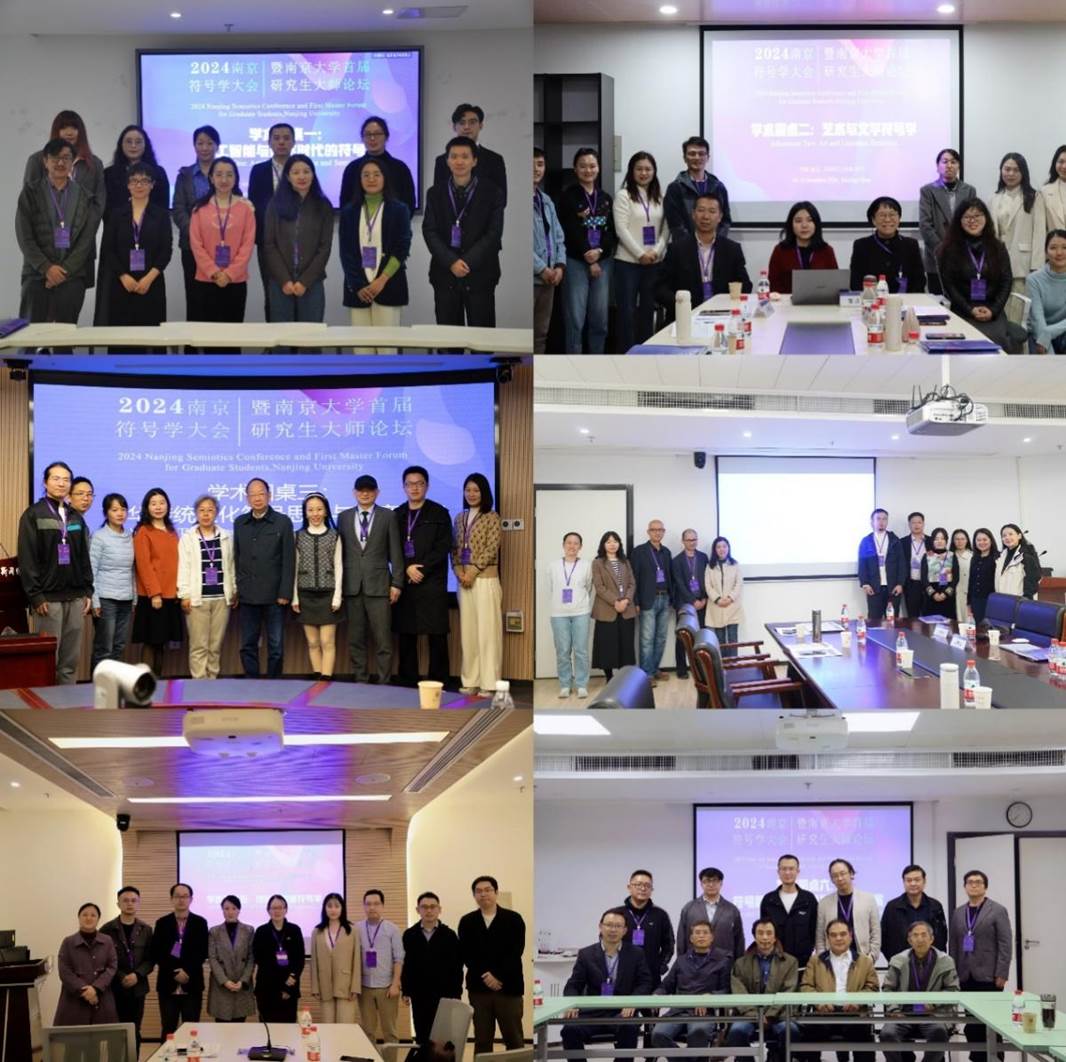
部分学术圆桌分会场合照
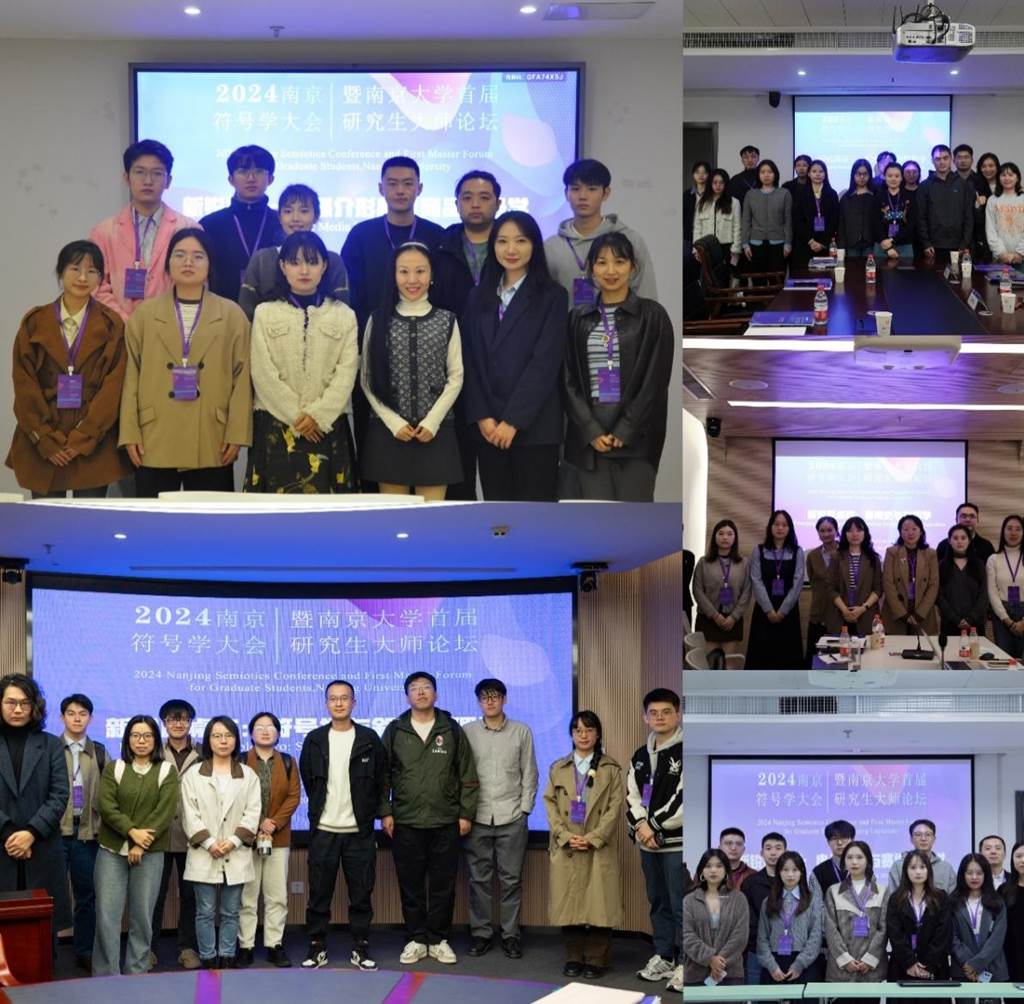
部分新锐圆桌分会场合照
最后的会议闭幕式由bwin必赢唯一官方网站饶广祥教授主持,并由各分论坛代表首先发言。随后,bwin必赢唯一官方网站唐小林教授为大会做学术总结,南京大学丁和根教授代表大会主办方致闭幕辞。
本次符号学会议汇聚了国内外符号学学术前沿思想,诸位与会专家和青年学者在会上充分交流思考、碰撞思想火花,提出了一系列符号学新观点新方法,本次大会不失为一场丰盛的学术盛宴,进一步推动了中国符号学的新发展。
The 2024 Nanjing Semiotics Conference and The First Master Forum for Graduate Students of Nanjing University Successfully Held
From November 9 to 10, 2024, the 2024 Nanjing Semiotics Conference and the First Master Forum for Graduate Students of Nanjing University were ceremoniously held in Nanjing, Jiangsu Province. The conference and forum were hosted by the Semiotics and Communication Studies Committee of the Chinese Association for Journalism History, the Cultural and Communication Semiotics Division of the Chinese Comparative Literature Association, the School of Journalism and Communication of Nanjing University, and the College of Literature and Journalism of Sichuan University, along with the Graduate School of Nanjing University. The Jiangsu Zijin Media Think Tank and the Semiotics & Media Studies Institute of Sichuan University (ISMS) also co-organized the event. The conference received academic support from multiple scholarly journals, too.
Themed as “The Symphony Between Humanities and Technology: New Dimensions in the Evolution and Development of Semiotics”, the conference was aimed to explore the theoretical innovations and practical applications of semiotics within the context of emerging technologies.
A total of 167 scholars from 89 research institutions of six countries and regions attended the conference. It attracted outstanding scholars from fields such as semiotics, narratology, art studies, and comparative literature, all coming together to push forward the semiotic research in the era of artificial intelligence.
The opening ceremony was hosted by Professor Ding Hegen from the School of Journalism and Communication, Nanjing University. Vice President of Nanjing University, Suo Wenbin, Chair of the Semiotic Communication Committee of the Chinese Association for Journalism History and President of the Cultural and Communication Semiotics Division of the Chinese Comparative Literature Association, Professor Jiang Xiaoli, and Secretary General of the Semiotics Committee of the Chinese Association of Logic, Professor Wang Jun, each delivered opening remarks.
Following the opening ceremony was the first session of the conference, consisting of the keynote presentations by eight distinguished scholars in international semiotics and communication studies, including two international scholars. This session was chaired by Professor Jiang Xiaoli, with Professor Ding Hegen providing academic commentaries. Distinguished scholars invited to deliver keynots in this session included Professor Steven Totosy from the Department of Comparative Literature at Purdue University and Cultural Studies and Education at Ghent University; Professor Fu Xiuyan from Jiangxi Normal University; Professor Zhao Xianzhang from the School of Liberal Arts at Nanjing University; Professor Zhao Yiheng from the College of Literature and Journalism at Sichuan University; Professor Wang Jiaxing from the School of Foreign Studies at Nanjing University; Professor Zhao Kuiying from the School of Arts at Nanjing University; Professor Qi Aijun from the School of Journalism and Communication at Shanghai University; and Professor Michael Ranta from the Department of Cultural Sciences at Linnaeus University in Sweden. They each delivered insightful academic presentations.
In the morning of November 10, the second session of academic presentations was held, chaired by Professor Hu Yirong from Sichuan University, with Professor Tan Guanghui from Sichuan Normal University serving as the commentator. These keynote speakers who gave their speeches both online and on sight were Professor Zeng Qingxiang from the Institute of Journalism and Communication at the Chinese Academy of Social Sciences; Professor Wang Jun from the School of Foreign Languages at Soochow University; Professor Lu Zhenglan from the College of Literature and Journalism at Sichuan University; Associate Professor Alin Olteanu from the Corpus Research Institute at Shanghai International Studies University; Professor Tang Xiaolin, Dr. Li Xing and Professor Hu Yirong from the College of Literature and Journalism at Sichuan University; Professor Massimo Leone from the Department of Philosophy and Education at the University of Turin in Italy; and Professor Kristian Bankov from the Southeast European Center for Semiotic Studies at New Bulgarian University in Bulgaria.
The conference received a total of 135 papers. 144 senior scholars and young talents from domestic and foreign universities participated in 11 parallel forums. The divisions were focused on the following topics: Semiotics of Artificial Intelligence and the Digital Age, Art and Literary Semiotics, Research on Chinese Traditional Cultural Semiotic Thought and Heritage, International Communication and Cross-Cultural Communication Semiotics, Information and Communication Semiotics, Semiotic Narratology and Advances in Semiotic Theory, Media Imagery and Commodity Semiotics, Semiotic and Narrative Theory, Art and Literary Semiotics, Journalism History and Communication Studies, and Cybermedia and Cybersemiotics. Participants shared their latest research achievements. Academic sparkles were kindled via intense exchanges.
The closing event of the conference was chaired by Professor Rao Guangxiang from Sichuan University. Representatives from each parallel forum presented first. Afterwards, Professor Tang Xiaolin from the College of Literature and Journalism at Sichuan University gave an academic summary for the conference. And Professor Ding Hegen from Nanjing University delivered the closing remarks on behalf of the conference organizers.
This semiotics conference brought together cutting-edge ideas in semiotics from both China and abroad. Scholars engaged in inspiring discussions and exchanges of ideas, which led to new perspectives and methods in semiotics. It can be concluded that the conference was an academic feast and remarkable improve the development of semiotics in China.
文|陈惠娟 戴思颜
图|陈惠娟 戴思颜 刘志鑫 邓若曦 柯滢芬 郑思言 郭子涵 俞汶希
编辑|陈艳杰
审核|银浩

